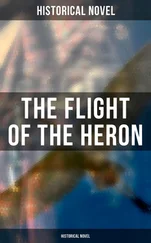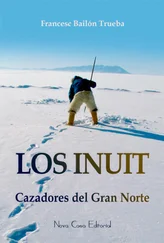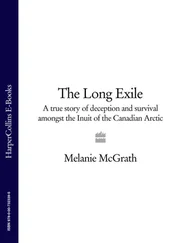This version may be found in all Inuit schools across northern Canada. It is now out of print.
Much remained to translate the manuscript for non-Inuit readers. There were many additions and the whole text needed the form and flow of a novel written for the average person. I again got to work and, with the assistance of the Avataq Cultural Institute and Canada’s Department of Indian and Northern Affairs, this task dominated my life for much of the years 2000 to 2002. The enthusiasm of publisher Alain Stanké and his publishing team brought everything to fruition, and fifty years after being first written my French translation of this unique work was published (2002) and soon became a Canadian bestseller. This English edition of Sanaaq was translated by Peter Frost from the French version.
This novel lets us share the daily lives of Mitiarjuk’s characters, with their seasonal activities and also the joys and pains of their life cycle. But it seems appropriate to inform the reader about certain aspects of this life story, using the very numerous comments that the author made to me during our many years of working closely together. I will thus deal with the form, the content, the historical and cultural context and, finally, the characters of this striking work of literature.
FORM AND STYLE
Mitiarjuk’s style is brisk, fluid, and lively, with precise, detailed descriptions. This is all the more remarkable because she seldom reread her work and hardly ever corrected what she wrote. It must be said that the syllabic writing system, in its simplest form — the one used in Sanaaq’ s manuscript — is really a kind of shorthand that can be written almost as fast as it can be read aloud. This fact, together with the oral manner of passing on traditional knowledge among the Inuit, may account for the great spontaneity of her writing and the importance given to direct speech. There are virtually no pages without at least one sentence in direct speech. This makes the writing so vivid that the novel seems at times to read like a film script. On another note, the sensorial intelligence of the Inuit is more developed than that of Western peoples. For them, the senses of hearing, sight, touch, and smell, combined with taste, are invaluable tools for hunting, sewing, and food preparation. Mitiarjuk has strewn her novel with expressions that evoke sounds: the crackling of a flame in an oil lamp or the dripping of water falling to the ground. One also comes across onomatopoeia: words like tikkuu for a gun going off or sarvaq for an object plunking into the water. There are many interjections to express feelings or the calls of animals. Finally, much use is made of children’s language with its reduplication of syllables: apaapa (food), uquuqu (bird or sea animal), and utuutu (land animal).
Content and Implicit Surrounding Details
This novel may be read on several levels. First, one can focus on the action, the feelings, and the relationships between the characters, thereby gaining a mass of details on the Inuit culture and life of the past — and also on Inuit psychology, which is so inaccessible when one does not speak the language and does not know the sociocultural milieu. On this first level, too, slight variations are noticeable in the content of the episodes, depending on whether they were written for the missionaries or for the anthropologist. Some self-censorship by the author may be detected in the first two manuscripts collected by the Oblates, i.e., the first thirty-seven episodes. Mitiarjuk was a practising Catholic and in these episodes, through the utterances of Sanaaq, her heroine, she expresses moralizing judgments on the old beliefs, such as omens. She avoids any allusions to sex or to invisible beings, which appear in the rest of the novel. In episode 27, when describing the bone game, the author wrote after listing the different little bones: “There is still one whose name I don’t dare give.” Questioned in 1965 about this omission, she confessed that the bone was an utsulutuq (figurine of a vulva), which she then added to her list. The second part of episode 24, interrupted by the author’s hospitalization and completed later for the anthropologist, clearly shows a change in attitude, with a long development on mythology and beliefs. Furthermore, the last ten episodes address themes that are absent from the initial manuscripts, such as conjugal violence, sexual possession by incubus and succubus spirits, and sexual relations with Qallunaat.
On a second level of textual understanding, which requires good knowledge of the Inuit milieu, there is a mass of implicit information that fleshes out the meaning of the text and that appears in the author’s comments. It would have doubled the novel’s volume had it been included.
A third level of interpretation of Sanaaq is harder to grasp. On the one hand, it deals with Mitiarjuk’s personal life, i.e., the events and experiences that inspired or influenced her literary creation. On the other, it deals with the symbolism that is present in Inuit culture. This symbolism may be detected in the form of day-to-day objects, in the way different aspects of the human body and the natural environment are perceived, and in the Inuit terms that designate them. I will confine myself here to one example. When Mitiarjuk began to read aloud the first few lines of episode 9 of her manuscript, where Qalingu is coming back from hunting in his qajaq, I was surprised to see her smile while reading the following passage: “Arnatuinnaq hauled the qajaq out of the water by pulling on its usuujaq (bow).” This term, as mentioned in the glossary, literally means “what looks like a penis.” I interrupted her and asked what was making her smile. She burst out laughing and told me the following story:
Fifteen years ago, my cousin Nutaraaluk was sleeping in the family igloo. She shared the same skin blanket as her young brother, an adolescent about ten years old. All of a sudden, in the middle of the night, the whole family was awoken by the cries of the young boy, still asleep, like his sister. The mother raised the skin blanket and saw that the young girl was pulling with both hands on her brother’s penis… Awakened by her mother, Nutaraaluk recounted that she dreamed that her brother was coming back from hunting in his qajaq and that she was helping him come ashore by pulling on its bow.
Historical and Cultural Context
The novel has many historical references:
• arrival of the first Whites by boat and establishment of the first traders [episode 8];
• visit of the first Anglican and Catholic missionaries, and establishment of a Catholic mission [ep. 25];
• landing of the first airplane [ep. 23];
• first evacuation by air to a hospital in the South [ep. 39];
• first intervention by the police and threat of imprisonment for beating and injuries [ep. 40];
• first visit by a Northern Affairs agent, first payment of family allowances and old age pensions, and first paid employment offered to the Inuit outside the village [ep. 43];
• first medical visit by a nurse, and sending of young patients to a hospital in the South [ep. 45]; and
• first Catholic baptism, and conflicts with the Anglican pastor [ep. 46].
One must not, however, look for a rigorous historical framework in this novel. Although Mitiarjuk had direct knowledge of the region’s events since she was born in the early 1930s, events further back are known from what the elders told her and were thus, in her memory, condensed into a shorter time-frame. Her parents told her about the establishment of the first trading post (Révillon Frères) at Kangirsujuaq, in 1910, followed by the Hudson’s Bay Company post four years later. As early as 1884, however, an ice-observing station had been established and it operated for two years on Stupart Bay. It was the first sustained contact with Qallunaat for most of the local Inuit. Only a few heads of family had previously had the opportunity to meet any while fur trading — first on the Labrador Coast, then in the Great Whale region and, finally, from the 1860s on, at Fort Chimo on Ungava Bay. When the story begins, the Inuit were already using tobacco, matches, and guns. They had old coal bags, old tin cans, and fabrics. With regard to Christianity, the first attested visits by Inuit-speaking missionaries were those of Rev. Peck, who went to Kangirsujuaq by boat from Baffin Island in the early 1920s and baptized some Inuit. So many would eventually be evangelized that when Catholic missionaries established the first permanent mission, in 1936, the Anglicans had already baptized the entire population. Mitiarjuk’s father was one of the catechists for the community. Nonetheless, Mitiarjuk enthusiastically joined the new Christian faith in the 1940s. It was a personal choice and she stuck by it. This has not been so for many other Anglican and Catholic families who have chosen to join the Pentecostal church in recent years.
Читать дальше
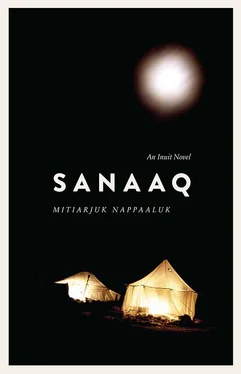

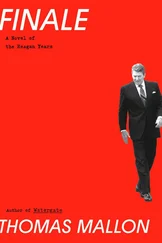
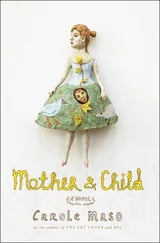
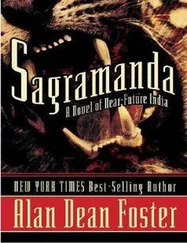


![Дональд Уэстлейк - Enough [A Travesty (novel) and Ordo (novelette)]](/books/416846/donald-uestlejk-enough-a-travesty-novel-and-or-thumb.webp)
